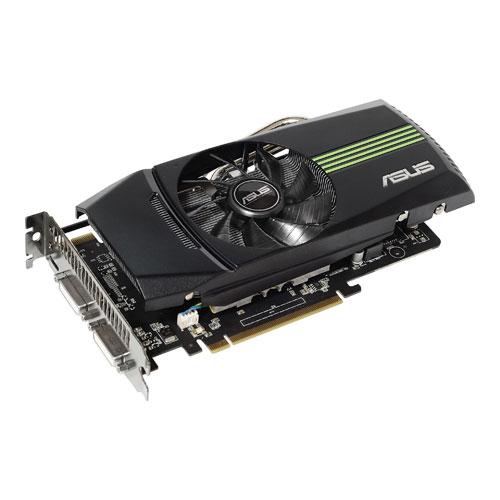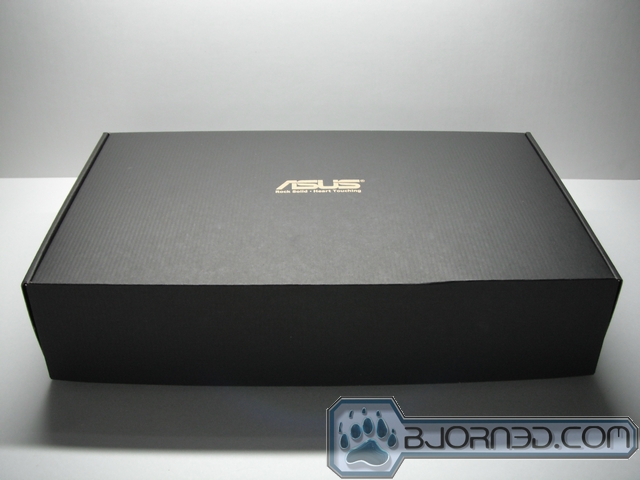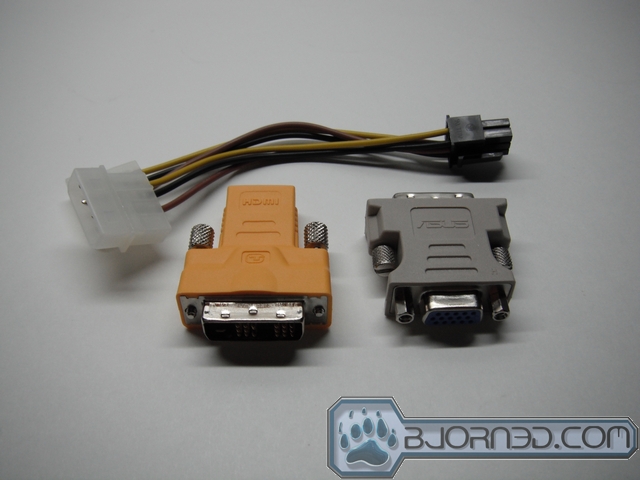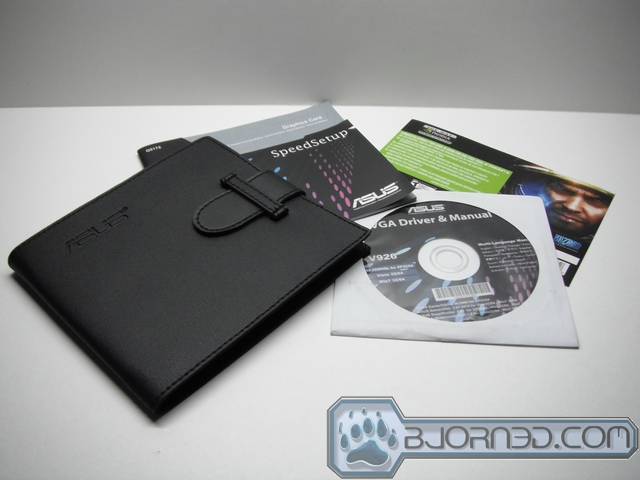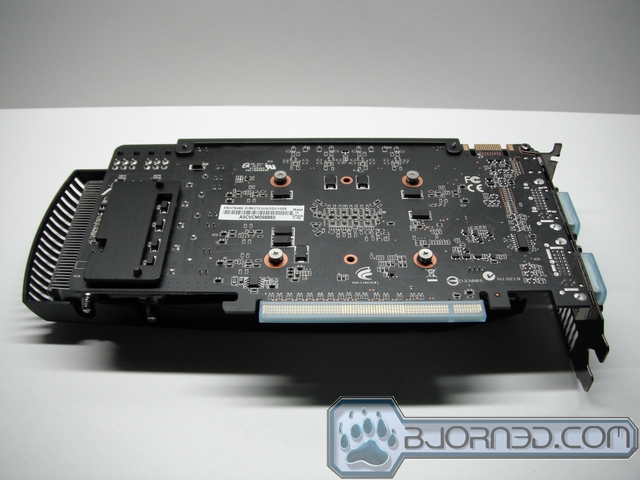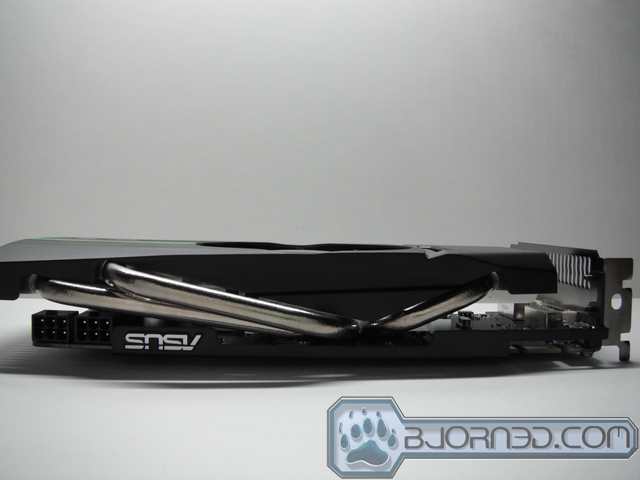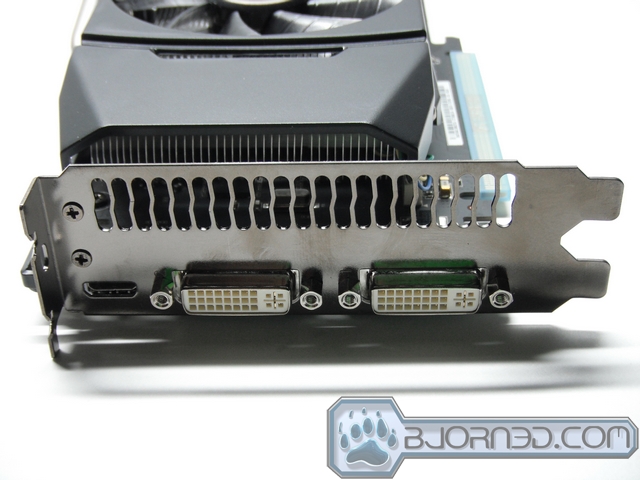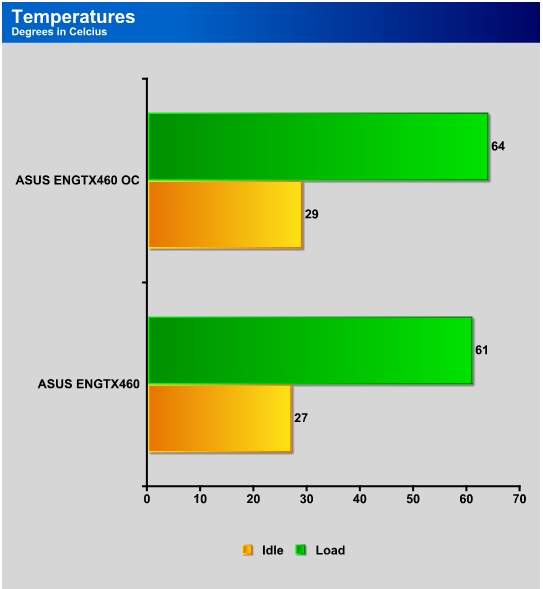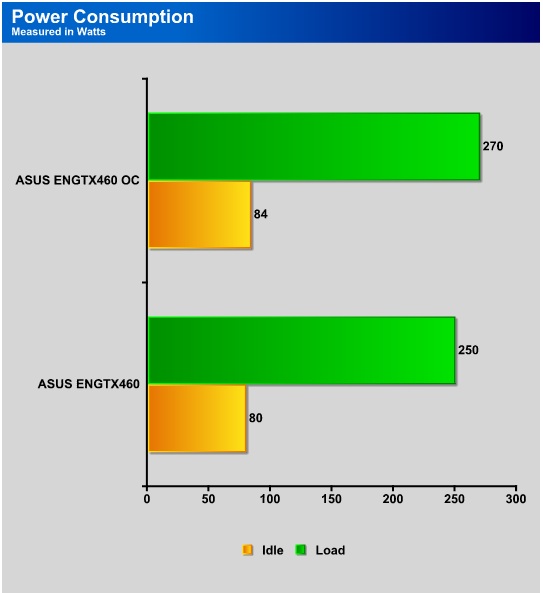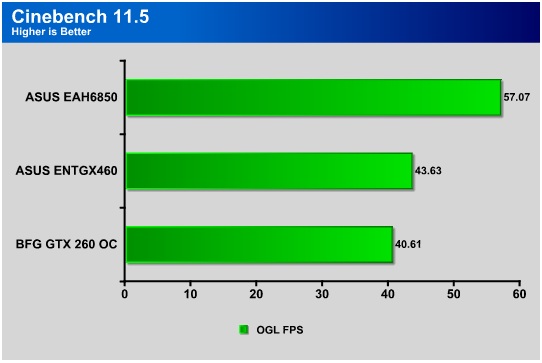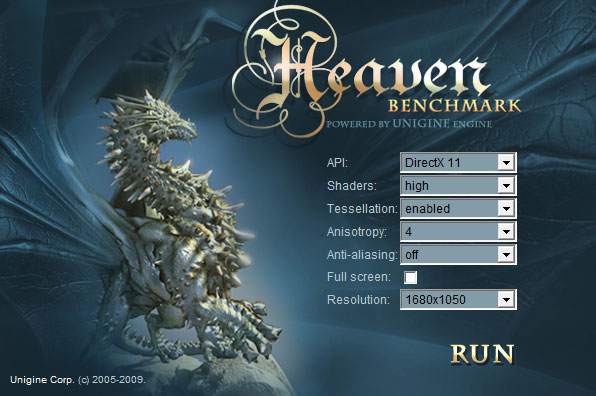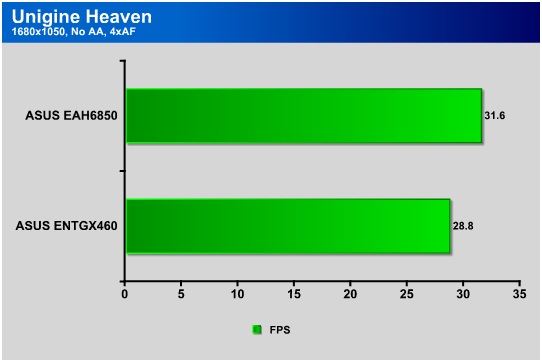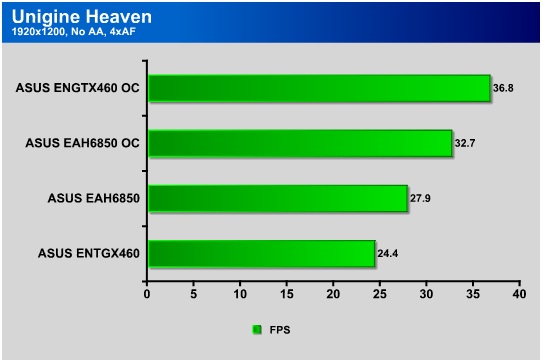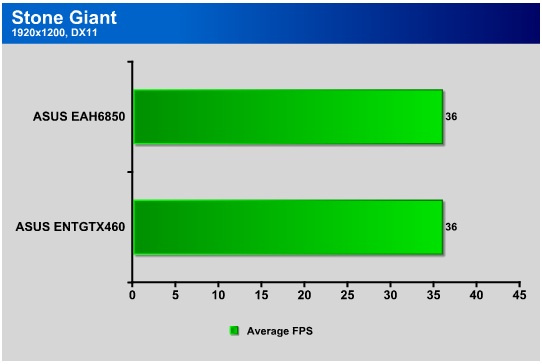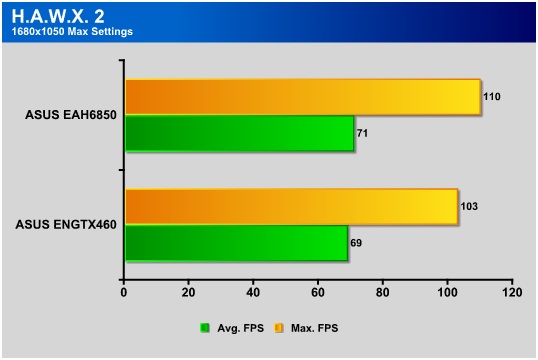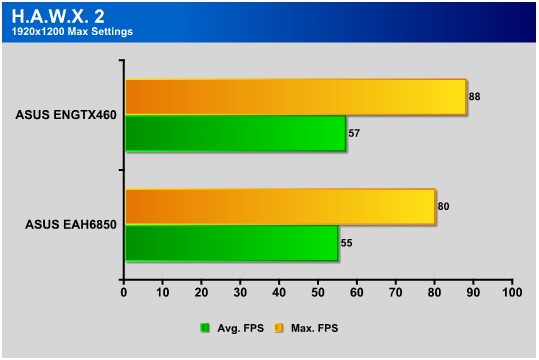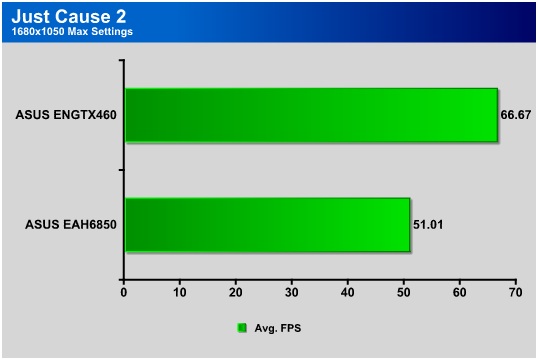By modifying the cooling to provide up to 20% better results than a standard GTX 460, ASUS has provided a videocard that meets performance standards while still keeping cool.
INTRODUCTION
NVIDIA did a great job of providing a performance videocard at an affordable price when they realeased the GTX 460 in July of 2010. ASUS has taken the standard GTX 460 platform and provided a unique cooling system, along with their unique Voltage Tweak Technology for an up to 50% performance gain. Sporting 1GB of GDDR5 running at 900MHz and a standard GPU clock of 675MHz, the DirectCU version of the GTX 460 performs right where we expected. It’s also priced affordably, a decent 180 USD at Newegg.Check out the rest of the review to see how the enhanced cooling system performs.
FEATURES
While ASUS stuck to the basics with most of the features on the DirectCU GTX 460, they did toss in a few extras that help sweeten the deal when comparing cards from different vendors.
GeForce CUDA Technology – Unlocks the power of GPU’s processor cores to accelerate the most demanding system tasks
NVIDIA PhysX Ready – Dynamic visual effects like blazing explosions, reactive debris, realistic water, and lifelike characters
Microsoft DirectX 11 Support – Brings new levels of visual realism to gaming on the PC, and provides top-notch performance
Microsoft Windows 7 Support – Enables PC users to enjoy an advanced computing experience and to do more with their PC
SLI Support – Multi-GPU technology for extreme performance
Take Your Game Beyond HD – Dual-link DVI able to drive the industry’s largest & highest resolution flat-panel displays up to 2560×1600
PCI Express 2.0 Support
ASUS Splendid – Watching movies on PC is as good as on top-of-the-line consumer televisions
ASUS Gamer OSD – Real-time overclocking, benchmarking and video capturing in any PC game!
ASUS Smart Doctor – Your intelligent hardware protection and powerful overclocking tool
GPU Guard – Doubles structural reinforcement for the PCB. Crack free!
EMI Shield – Effectively blocks 66% electromagnetic radiation to protect user’s health and improve graphics clarity
Fuse Protection – Fuse Protection technology delivers double the over-current protection for risk-free computing
1GB GDDR5 Memory – On-board memory for the best gaming experience & the best resolution
SPECIFICATIONS
| Specifications | ASUS ENGTX460 DirectCU |
|---|---|
| Graphics Engine | Nvidia GeForce GTX 460 |
| Video & Color Engine |
ASUS Splendid HD |
| Bus Standard | PCI Express 2.0 |
| Video Memory |
1GB GDDR5 |
| Engine Clock |
675MHz |
| Shader Clock |
1350MHz |
| Memory Clock |
3600 MHz (900 MHz DDR5) |
| Memory Interface | 256-bit |
| RAMDAC |
400MHz |
| DVI Max. Resolution |
2560 x 1600 |
| D-Sub Max. Resolution | 2048 x 1536 |
| D-Sub Output |
1 (via DVI to D-Sub adaptor) |
| DVI Output |
2 |
| HDMI Output |
1 (mini) |
| HDCP Support |
Yes |
| Adaptors Bundled |
1x DVI to D-Sub adaptor
1x DVI to HDMI adaptor |
| Software Bundled |
ASUS Utilities and Driver |
| Dimensions |
9.8″ x 5.03″ |
CLOSER LOOK
Packaging and Extras
Like most manufacturers, ASUS used the ENTGX460’s box to tout its unique features. A large Voltage Tweak sticker is prominently displayed above a listing of other features included with the videocard. The back of the box gives another list of features and once again shows off not only the Voltage Tweak information, but information about the DirectCU cooling system as well.
The inner box of the package is aesthetically pleasing, a simple black box with the ASUS logo stamped in gold. Inside is another internal box, holding the included adapters. Next to the secondary box is where the vidoecard rests in a form-fitting foam block with lid.
Below the foam packing block is another internal box that contains the videocard driver CD, a setup manual, CD binder and in this case, a trial code for the Starcraft II: Wings of Liberty bundle.
ENGTX460 DirectCU
One of the first things we noticed about this videocard were the “Nvidia green” racing stripes along one side of the fan shroud. They really set off the look of this uniquely cooled card. A single 9 blade fan delivers air to the cooling fins below.
Three heatpipes make direct contact with the GPU heatspreader for superior cooling compared to the standard cooling solution found on most OEM style GTX460’s. The heatpipes are flattened where they meet the heatspreader, to allow for more surface contact with the spreader, resulting better cooling. The three heatpipes then move out from the GPU to a quite large array of cooling fins, where the air from the cooling fan flows across them under the plastic shroud.
Output options are pretty basic, with the standard dual DVI ports and single mini-HDMI port all residing next to a full width ventilation grille.
TEST SETUP
| Test Platform | |
| Processor | AMD Phenom II X4 970 BE |
| Motherboard | ASUS M4A88TD-V EVO/USB3 |
| Memory | Kingston HyperX DDR3 1600 4GB Kit |
| Hard Drive (internal) | 250GB Western Digital SATA 3.0Gb/s 16MB cache |
| Video Cards | ASUS ENGTX460 DirectCU
ASUS EAH6850 DirectCU BFG GeForce GTX 260 OC MaxCore 55 |
| Power Supply | Thermaltake Toughpower XT 750 |
| Case | Antec P182B |
| Operating System | Windows 7 Ultimate 64-bit |
OVERCLOCKING
To overclock the ENGTX460 DirectCU, we used the bundled SmartDoctor sofware that ASUS provides. While it is not quite as polished as some other applications, it does the job. The results of the overclocking settings will be listed in the benchmarks results throughout the remainder of this review.
In order for us to consider an overclock speed as stable, the videocard had to run through the paces of various benchmarks without crashing, showing artifacts or any other signs of overclocking related issues.The GPU was able to increase from 675MHz up to 850MHz, a gain of 175MHz. Working the shader clock up the ladder resulted in a speed of 1700MHz, an increase of 350MHz from the stock speed of 1350MHz. On the memory, the final speed was 975MHz, an increase of 75MHz over stock. While these numbers may seem modest, they did bring about noticeable performance increases across the board.
TEMPERATURES
One of the main features of the ENGTX460 DirectCU is the unique heatpipe cooling solution that ASUS has implemented. ASUS claims up to a 20% increase in cooling performance compared to generic cooling solutions found on OEM style cards. All temperature testing was done with the fan setting on “Auto” to allow the videocard to regulate the cooling itself.
POWER CONSUMPTION
These days power consumption is a factor that more and more users are taking into consideration, especially if a computer is left on all of the time, and even more so if the videocard is processing distributed computing applications like Folding@Home.
Power readings were taken at both idle and during a load using a standard Kill-A-Watt unit.
Under load, we can definitely see that the ASUS ENGTX 460 DirectCU consumes a large amount of power, but at idle the card goes into a power saving mode by downclocking, resulting in low power consumption.
3DMARK VANTAGE
For complete information on 3DMark Vantage Please follow this Link:
www.futuremark.com/benchmarks/3dmarkvantage/features/
The newest video benchmark from the gang at Futuremark. This utility is still a synthetic benchmark, but one that more closely reflects real world gaming performance. While it is not a perfect replacement for actual game benchmarks, it has its uses. We tested our cards at the ‘Performance’ setting.
In our first benchmark, we see that both the GTX 460 and HD 6850 are very equally matched at stock clocks, and both out-perform previous generation hardware like the GTX 260 OC. Since we were able to make more headway with overclocking the GTX 460, we can really see it shine in the overclocked results, gaining nearly 3,000 points on the GPU score in 3DMark Vantage.
CINEBENCH 11.5
CINEBENCH is a real-world cross platform test suite that evaluates your computer’s performance capabilities. CINEBENCH is based on MAXON’s award-winning animation software CINEMA 4D, which is used extensively by studios and production houses worldwide for 3D content creation. MAXON software has been used in blockbuster movies such as Spider-Man, Star Wars, The Chronicles of Narnia and many more.
CINEBENCH is the perfect tool to compare CPU and graphics performance across various systems and platforms (Windows and Mac OS X). And best of all: It’s completely free.
Cinebench 11.5 gives us a different result, with the GTX 460 falling short of the HD 6850 by a noticable 14FPS. Let’s move on to a few more graphically intense benchmarks that will push the GTX 460 DirectCU to its limits.
UNIGINE HEAVEN 2.1
Unigine Heaven is a benchmark program based on Unigine Corp’s latest engine, Unigine. The engine features DirectX 11, Hardware tessellation, DirectCompute, and Shader Model 5.0. All of these new technologies combined with the ability to run each card through the same exact test means this benchmark should be in our arsenal for a long time.
When pitted head to head in a tessellation heavy benchmark, the GTX 460 came in just short of the HD 6850. While this slight difference is hardly noticeable at such low framerates, it is still worth noting, as tessellation is an increasingly important component in new games.
Once the speeds were cranked up however, the ASUS ENGTX 460 DirectCU pulled back into the lead, although only by a small margin. At this higher resolution, the results are similar to those of the 1680×1050 testing at stock speeds, with the HD 6850 slightly edging out the GTX 460.
STONE GIANT
We used the built in utility for determining FPS. We started the benchmark, and let it run on stock settings for 3 passes without making any adjustments of changing camera angles.
Key features of the BitSquid Tech (PC version) include:
- Highly parallel, data oriented design
- Support for all new DX11 GPUs, including the NVIDIA GeForce GTX 400 Series and AMD Radeon 5000 series
- Compute Shader 5 based depth of field effects
- Dynamic level of detail through displacement map tessellation
- Stereoscopic 3D support for NVIDIA 3DVision
“With advanced tessellation scenes, and high levels of geometry, Stone Giant will allow consumers to test the DX11-credentials of their new graphics cards,” said Tobias Persson, Founder and Senior Graphics Architect at BitSquid. “We believe that the great image fidelity seen in Stone Giant, made possible by the advanced features of DirectX 11, is something that we will come to expect in future games.”
“At Fatshark, we have been creating the art content seen in Stone Giant,” said Martin Wahlund, CEO of Fatshark. “It has been amazing to work with a bleeding edge engine, without the usual geometric limitations seen in current games”.
The two cards performed the same in this benchmark, both coming in at 36FPS.
HAWX 2
Tom Clancy’s H.A.W.X. 2 plunges fans into an explosive environment where they can become elite aerial soldiers in control of the world’s most technologically advanced aircraft. The game will appeal to a wide array of gamers as players will have the chance to control exceptional pilots trained to use cutting edge technology in amazing aerial warfare missions.
Developed by Ubisoft, H.A.W.X. 2 challenges you to become an elite aerial soldier in control of the world’s most technologically advanced aircraft. The aerial warfare missions enable you to take to the skies using cutting edge technology.
H.A.W.X. 2 really looks great with tesselation enabled, although it is only enabled on the terrain. The detail really shows on the edges of the mountains and goes a long way to help the game look more lifelike. Here we see the results to be quite close once again, with the HD 6850 barely moving past the GTX 460 in both the average and maximum FPS results.
Bumping the resolution up a notch results in a flip-flop of numbers, with the GTX 460 regaining the lead over the HD 6850.
Just Cause 2
Here we see the most definite lead by the ASUS ENGTX 460 Direct CU so far, taking the lead with a decent 15 FPS increase in performance over the HD 6850.
The results stay the same in Just Cause 2 when the resolution is increased, with the lead going to the GTX 460 once again as it bests the HD 6850 by 10 FPS.
CONCLUSION
As we worked our way through this review, one thing was apparent the entire time: the mainstream videocard market is currently in the middle of a tight race to the finish line. The results of the ASUS ENGTX 460 DirectCU when compared to the ASUS EAH 6850 DirectCU are so close to one another that both should be highly considered when looking to move to a new videocard.
ASUS distinguishes themselves from other GTX460 manufacturers with the improved cooling from the DirectCU solution. By using the proven system of heatpipes, ASUS is able to keep the temperatures of the GTX 460 GPU down to a resonable level.
Reviewer’s Opinion:
The ASUS ENGTX460 DirectCU is a no-brainer choice when looking for a new mainstream graphics card, as it performs admirably at stock clocks, and then really gets chugging once the clocks have been increased. What that equates to is more performance for your money, and these days that is something to definitely pay attention to.
| OUR VERDICT: ASUS ENGTX460 DirectCU |
||||||||||||||||||
|
||||||||||||||||||
| Summary: The ASUS ENGTX460 DirectCU provides ample performance for its price, and stays cool thanks to ASUS’ unique heatpipe cooling solution. For its innovation and value, the we give the ASUS ENGTX460 DirectCU our Bjorn3D Golden Bear Award. |
 Bjorn3D.com Bjorn3d.com – Satisfying Your Daily Tech Cravings Since 1996
Bjorn3D.com Bjorn3d.com – Satisfying Your Daily Tech Cravings Since 1996
